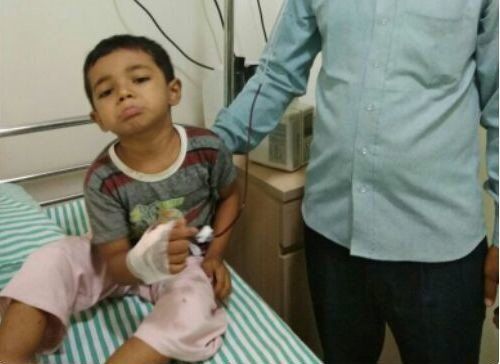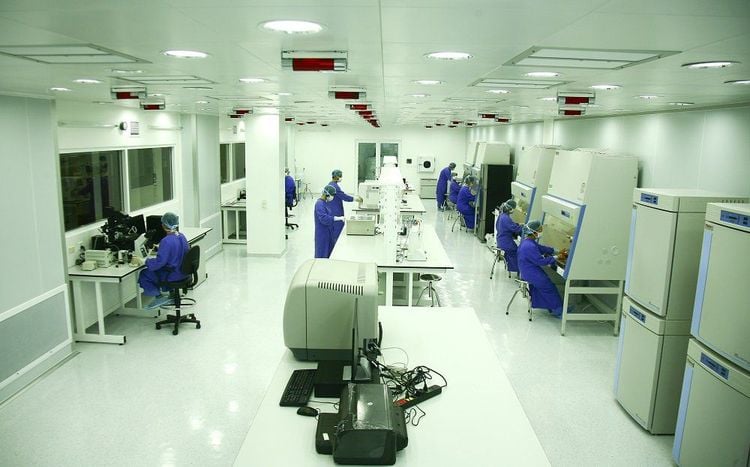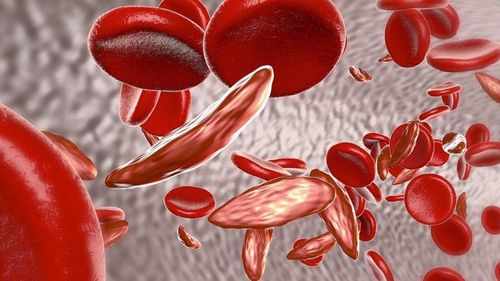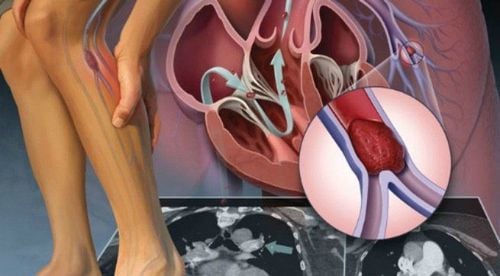This is an automatically translated article.
The article was consulted with Master, Doctor Nguyen Thi An - Pediatrician - Neonatologist - Department of Pediatrics - Neonatology - Vinmec Ha Long International General Hospital.People with congenital hemolytic disease can still have a normal life, get married and have children like everyone else. However, these patients must adhere to a long-term, lifelong treatment with continuous blood transfusions and iron chelation.
1. Is thalassemia (congenital hemolysis) curable?
According to current medical advances, in the world there are two methods to cure the disease. The first is a human hematopoietic stem cell transplant that perfectly matches the patient. This method has been implemented in many countries around the world, including Vietnam. The second is gene therapy. However, this method is currently only being carried out in a step-by-step study on volunteer patients.2. How long does hemolytic disease live?

Trẻ bị bệnh Thalassemia nếu không được điều trị sẽ có tuổi thọ thấp
Therefore, patient management and disease prevention are urgent issues in order to reduce the birth rate of children carrying the gene and having congenital hemolytic disease.
3. How is congenital hemolytic disease treated?

Hệ thống trang thiết bị hiện đại của Viện nghiên cứu Tế bào gốc và công nghệ Gen Vinmec
Continuous blood transfusion: Depending on the severity of the disease, the doctor will announce the necessary time for a blood transfusion. Periodic chelation: Your doctor will give you medications or injections to chelate iron periodically to reduce complications. For patients with congenital G6PD deficiency, it is necessary to avoid using drugs or foods with oxidizing agents such as antimalarials, quinolones, peas...
In addition to the two main treatment methods, blood transfusion and iron chelation, at present, Vinmec Times City International Hospital has deployed and successfully implemented stem cell transplantation to cure congenital hemolysis. This is a method that helps to treat the root cause and cure the disease for the patient.
One of the prerequisites for a successful transplant is the post-transplant care conditions, which require state-of-the-art and modern equipment. To avoid the risk of infection right after the transplant, the baby care conditions in the isolation area of Vinmec International General Hospital are also strictly followed: All blood products are irradiated and filtered. Even your baby's food must be irradiated with ultraviolet light to kill all bacteria. During the post-transplant period, pediatric patients received prophylactic treatment of fungi, bacteria and viruses, combined with maintenance immunosuppressive drugs.
Professor - Dr. Nguyen Thanh Liem - Head of High-Tech Unit for Autism and Cerebral Palsy Treatment and Director of Vinmec Institute of Stem Cell and Gene Technology said: "There are about 10 million people in Vietnam currently. people with Thalassemia and carry the gene for this disease. In addition to the efforts of regulatory agencies and experts in counseling, screening, disease detection, and patient management, the success of Thalassemia stem cell transplantation at Vinmec is entirely attributable to the success of the stem cell transplant method. could open up the prospect of a radical cure for this disease.”
Currently in Vietnam, a number of cord blood banks have begun to develop. At Vinmec, there are more than 1,300 cord blood samples stored and preserved according to international standards; At the same time, the stem cell transplant area is equipped with a modern sterile room system to create optimal conditions for successful transplants.
Please dial HOTLINE for more information or register for an appointment HERE. Download MyVinmec app to make appointments faster and to manage your bookings easily.













